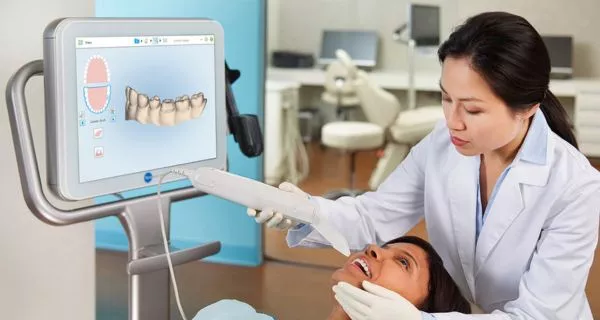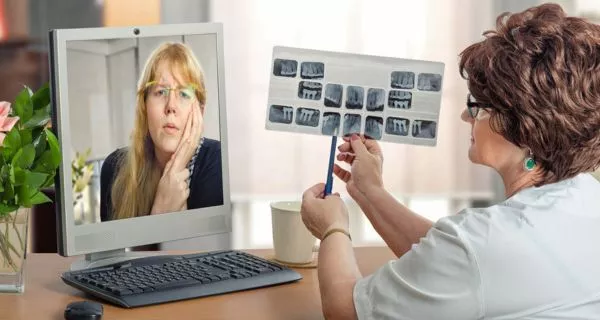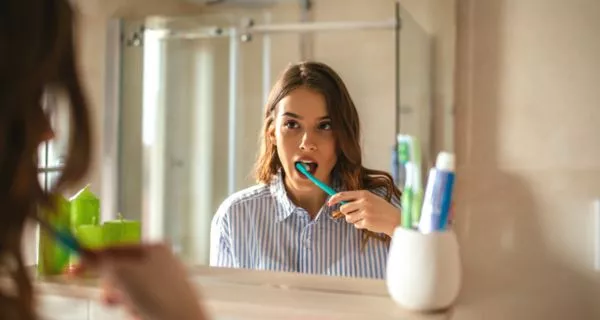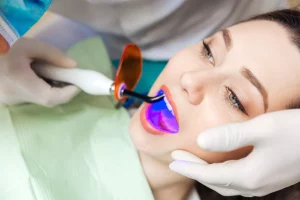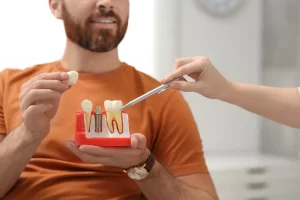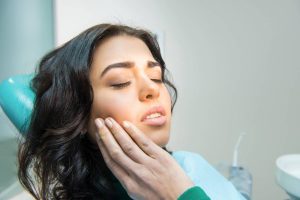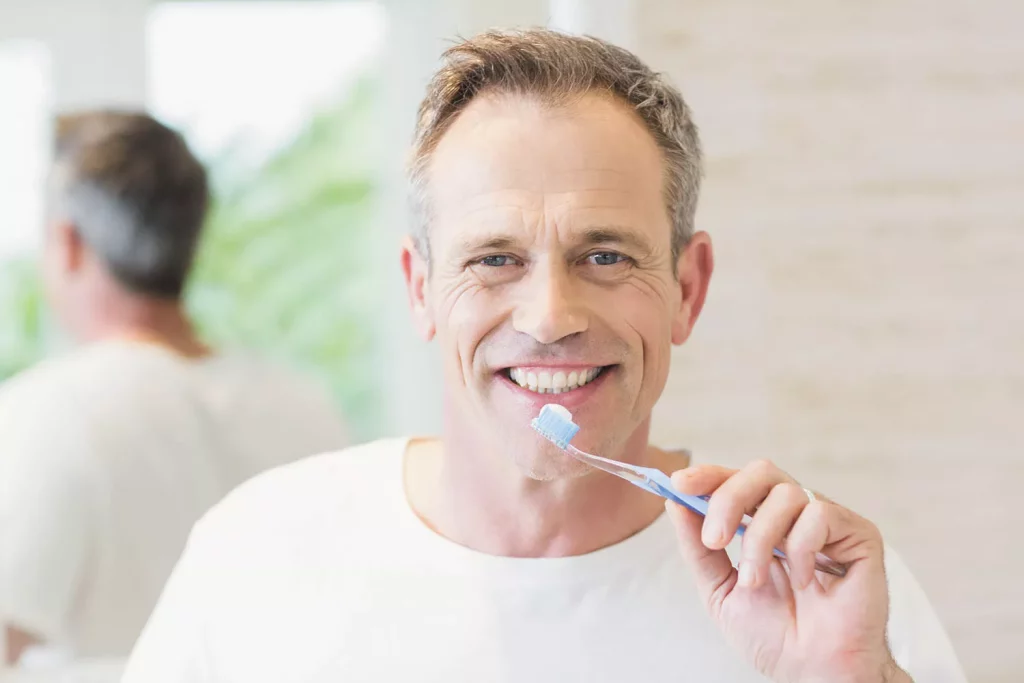Last Updated on: 12th January 2026, 12:58 am
National Dental Hygiene Month reminds us that oral hygiene is key to our overall well-being. Good habits like brushing, flossing, and regular dental visits help prevent cavities, gum disease, and even systemic conditions like heart disease or diabetes, making oral care more important than ever.
Every October, the United States celebrates National Dental Hygiene Month to recognize the importance of oral health and the vital role of dental hygienists in maintaining it.
This national observance aims to:
- promote awareness of daily oral hygiene routines.
- emphasize preventive dental care, not just aesthetics.
- highlight the contribution of dental hygienists to community health.
Launched in 2009 by the American Dental Hygienists’ Association (ADHA), this initiative encourages people to view oral care as an essential part of overall well-being.
By focusing on prevention and education, National Dental Hygiene Month reminds us that consistent oral care goes far beyond appearance; it plays a key role in preventing tooth decay, gum disease, and other health conditions that can affect the entire body.
Table of Contents
ToggleHow are oral health and overall well-being connected?
When we talk about well-being, we are referring to a state of balance that includes our physical, emotional, and social health.
A key part of that balance is oral health, which directly influences how we feel and how we live.
- Poor oral hygiene can lead to infections that spread through the bloodstream.
- Gum disease has been linked to heart disease, stroke, and diabetes.
- Inflammation in the mouth can weaken the immune system.
- Oral discomfort can affect mood, focus, and nutrition.
Neglecting dental care not only causes pain but can also increase the risk of serious health conditions, especially when combined with a poor diet or lack of exercise.
A sedentary lifestyle can lead to obesity, increasing the risk of infections and weakening the immune system. This impacts physical health; over time, it can also affect mental and emotional balance, potentially contributing to cognitive decline if left unaddressed.
In short, a healthy mouth and an active lifestyle work together to maintain both body and mind in optimal condition.
Why is maintaining good oral hygiene so important?
Proper oral hygiene prevents problems that can affect both the mouth and the entire body. When neglected, oral health issues lead to pain, infections, and systemic diseases.
Common oral problems caused by poor hygiene:
- cavities
- gum disease (gingivitis or periodontitis)
- tooth loss
Systemic health risks linked to poor oral care:
- heart disease and stroke, due to inflammation spreading from the gums.
- diabetes, which can worsen with untreated gum disease.
- a weakened immune system, making infections more frequent.
Keeping your mouth clean supports a strong immune system and contributes to overall well-being.
Why should you visit a dental hygienist regularly?
One of the most effective ways to protect your oral health is by seeing a dental hygienist regularly. These professionals do much more than clean your teeth; they help prevent disease and maintain a healthy smile for life.
During a routine hygiene visit, professionals:
- perform deep cleanings to remove plaque and tartar.
- educate patients on proper brushing and flossing techniques.
- detect early signs of problems before they become serious.
According to the Centers for Disease Control and Prevention (CDC), oral diseases, from cavities to oral cancer, cause pain and disability for millions of Americans each year.
By visiting your dental hygienist regularly and following good daily habits, you can protect your oral health and increase your chances of keeping your natural teeth for life.
How did the COVID-19 pandemic impact oral health?
The pandemic disrupted access to professional dental care, causing a rise in oral health issues. Main effects observed:
- Many clinics closed or reduced services, delaying routine cleanings and treatments.
- Increased gum disease, cavities, and plaque buildup.
- Heightened stress led to more cases of bruxism (teeth grinding), causing tooth wear, jaw pain, and headaches.
These factors revealed the importance of vital, consistent oral care and regular professional visits, even during challenging times.
How did people adapt their oral care during the pandemic?
As access to professional dental care became limited, individuals began relying more heavily on their at-home oral hygiene routines. This shift sparked the creation and rise in popularity of several new oral care products designed to improve at-home dental health.
Among the most notable trends:
- Smart electric toothbrushes: Equipped with features like pressure sensors and Bluetooth connectivity, these toothbrushes helped users ensure that they were brushing effectively without damaging their teeth or gums.
- Water and air flossers: Alternatives to traditional floss, these devices offered a more efficient way to clean between teeth, helping users maintain good oral hygiene even without regular dentist visits.
- Home whitening kits: With in-office whitening treatments becoming less accessible, people turned to home kits as a way to keep their teeth bright and clean during lockdowns.
- Advanced mouthwashes: Mouthwashes with antimicrobial properties became popular, helping prevent plaque buildup and improve overall oral hygiene.
- Plaque-disclosing tablets: These tablets helped individuals visually identify areas of plaque buildup, making it easier to target trouble spots during their oral care routines.
These innovations empowered individuals to take control of their dental hygiene even without in-office visits.
What new dental hygiene technologies are transforming oral care?
Modern dentistry is evolving rapidly, bringing new tools that improve precision, comfort, and patient care. These innovations are making oral hygiene more effective and accessible – both in clinics and at home.
Here are the latest advancements shaping the future of dental health.
How are digital dental records improving care?
- replacing paper files with secure electronic records.
- allowing instant access and data sharing between providers.
- improving accuracy, efficiency, and patient experience.
- Digital records comply with privacy regulations such as HIPAA and ensure that sensitive patient information remains secure.
Digitalization streamlines workflows, enhances coordination, and keeps sensitive information secure, supporting better overall patient care.
What makes intraoral scanners a game-changer?
- They capture precise 3D images of the mouth.
- They eliminate the discomfort of traditional molds.
- They improve accuracy for crowns, bridges, and aligners.
- They speed up communication with dental labs.
Intraoral scanners enhance comfort and efficiency, offering faster, cleaner, and more precise dental impressions.
How is 3D printing used in dentistry?
- by creating customized crowns, bridges, and dentures.
- by delivering better fit, function, and aesthetics.
- by reducing fabrication time for faster treatment.
3D printing helps dentists design patient-specific prosthetics, improving results while saving time.
How does computer-assisted treatment planning help?
- It uses CAD software to simulate dental procedures.
- It provides detailed visualization before surgery.
- It increases precision for implants and orthodontics.
- It minimizes risks and improves predictability.
Digital planning ensures safer, more accurate treatments and better long-term outcomes.
What is teledentistry and why is it important?
- It offers remote consultations, diagnostics, and follow-ups.
- It expands access for patients in rural or remote areas.
- It provides quick help in emergencies.
- It reduces travel time and clinic barriers.
Teledentistry makes dental care more accessible and convenient, ensuring continuous support beyond the clinic.
How do interactive tools educate patients?
- Mobile apps and virtual reality tools make oral care learning fun and engaging.
- They help patients understand procedures before treatment.
- Usage encourages consistent home hygiene routines.
Interactive education empowers patients to take responsibility for their oral health and feel more comfortable with dental care.
What are minimally invasive dental techniques?
- Laser technology is used for gum treatments and cavity care.
- They reduce pain, bleeding, and healing time.
- They offer a more comfortable, precise alternative to traditional drills.
Minimally invasive dentistry enhances patient experience with faster recovery and less discomfort.
How is artificial intelligence (AI) changing dentistry?
- It analyzes X-rays and intraoral images with high accuracy.
- It detects early signs of decay, infection, or oral cancer.
- It helps dentists create personalized, preventive care plans.
AI improves diagnostics and supports early intervention, helping to protect smiles before problems progress.
The rise of these technologies, especially during and after the pandemic, has empowered people to manage their oral care more effectively at home.
Although new tools make hygiene easier, regular dental visits remain essential for complete care.
How can you take charge of your oral health today?
Oral health is a key part of total well-being, and National Dental Hygiene Month is the perfect reminder to make it a priority. The pandemic highlighted how essential daily habits and modern tools are for maintaining strong smiles.
For better oral and overall health:
- Brush and floss every day.
- Visit your dental hygienist at least twice a year.
- Use new technologies that make oral care easier and more effective.
- Stay informed about preventive care and healthy habits.
By combining regular professional visits with innovative dental tools, you can protect your smile, prevent disease, and enjoy a healthier, more confident life – all year long – and not just during National Dental Hygiene Month.
Where can you find trusted dental care near you?
As National Dental Hygiene Month reminds us, regular visits to a trusted dentist are essential for a healthy smile. At Channel Islands Family Dental Office, families receive gentle, preventive, and complete dental care from a team that truly cares.
We proudly serve our communities in Ventura, Oxnard, Port Hueneme, Santa Paula, and Newbury Park.
Take the first step toward better oral health, schedule your visit today, and keep your smile healthy all year long.
Frequently Asked Questions (FAQ)
Voice Search Snippets (Q&A)
References
1. Department of Homeland Security (DHS). (2022, October 4). Dental Hygiene Month. https://www.dhs.gov/employee-resources/news/2022/10/04/dental-hygiene-month
2. DiFoggio W. (2024, August 8). National Dental Hygiene Month 2024: Celebrating Oral Health Awareness. Teeth Talk Girl. https://www.teethtalkgirl.com/career/rdh/national-dental-hygiene-month/
3. Gracco, A., De Stefani, A., & Bruno, G. (2023). Influence of new technology in dental Care: A Public Health perspective. International Journal of Environmental Research and Public Health, 20(7), 5364. https://doi.org/10.3390/ijerph20075364
4. Mayo Clinic. (2024, March 14). Oral health: A window to your overall health. https://www.mayoclinic.org/healthy-lifestyle/adult-health/in-depth/dental/art-20047475
5. Pasupuleti, M. K., Salwaji, S., Dantuluri, M., Raju, M., Raju, V. R., Marrapodi, M. M., Cicciù, M., & Minervini, G. (2024). Newer technological Advances: a step towards better dental care. The Open Dentistry Journal, 18(1). https://doi.org/10.2174/0118742106320205240819093345




